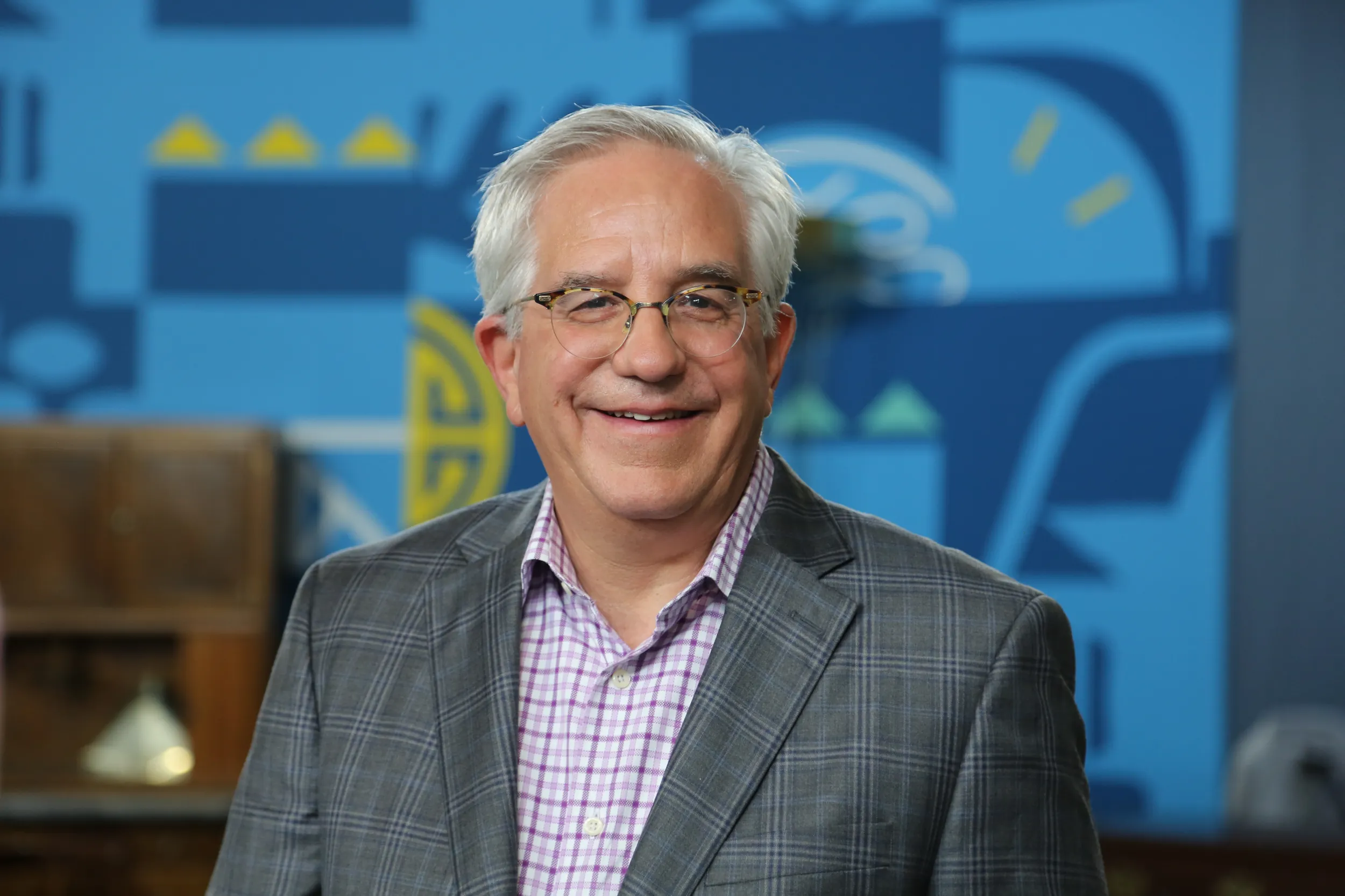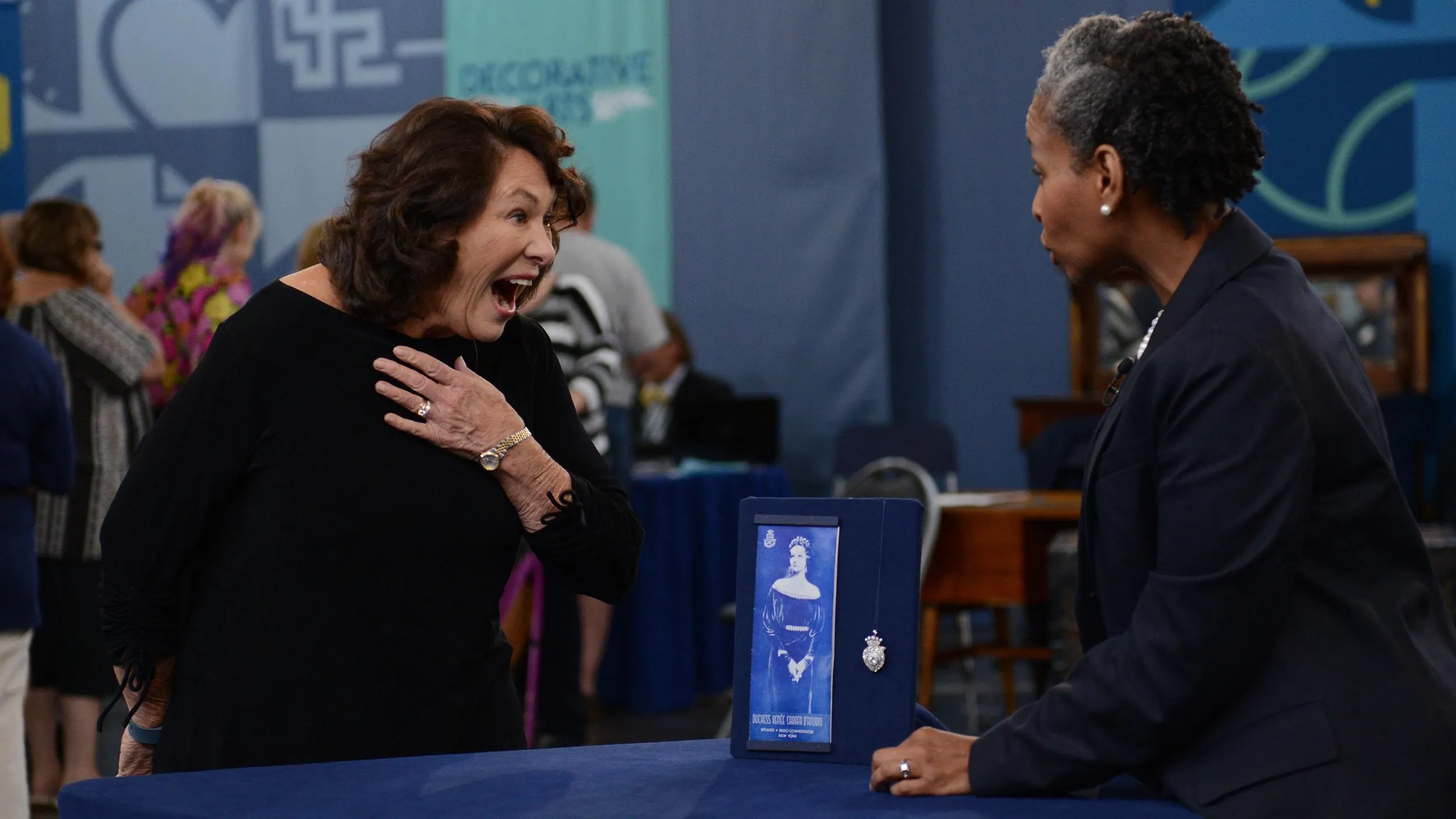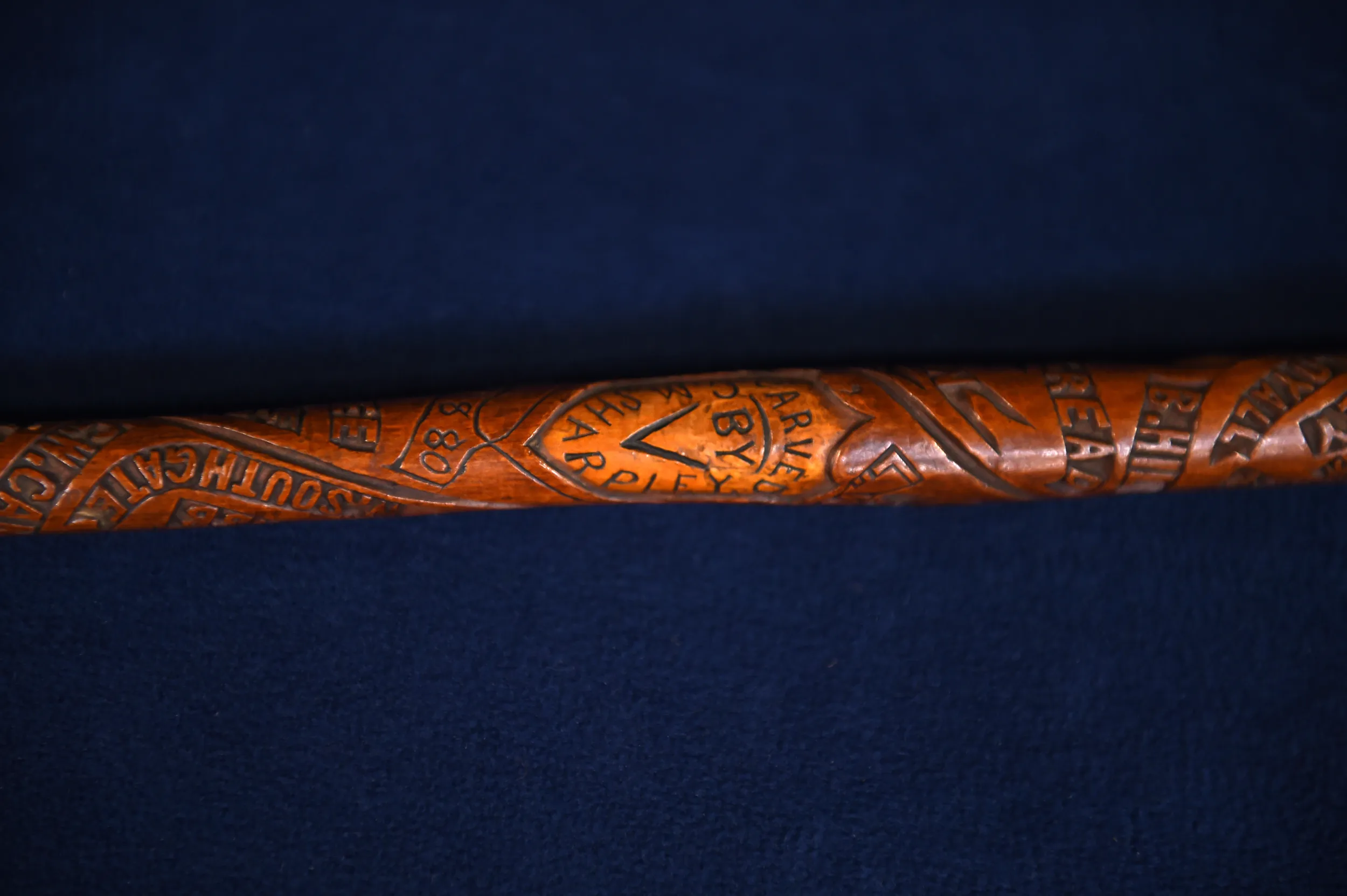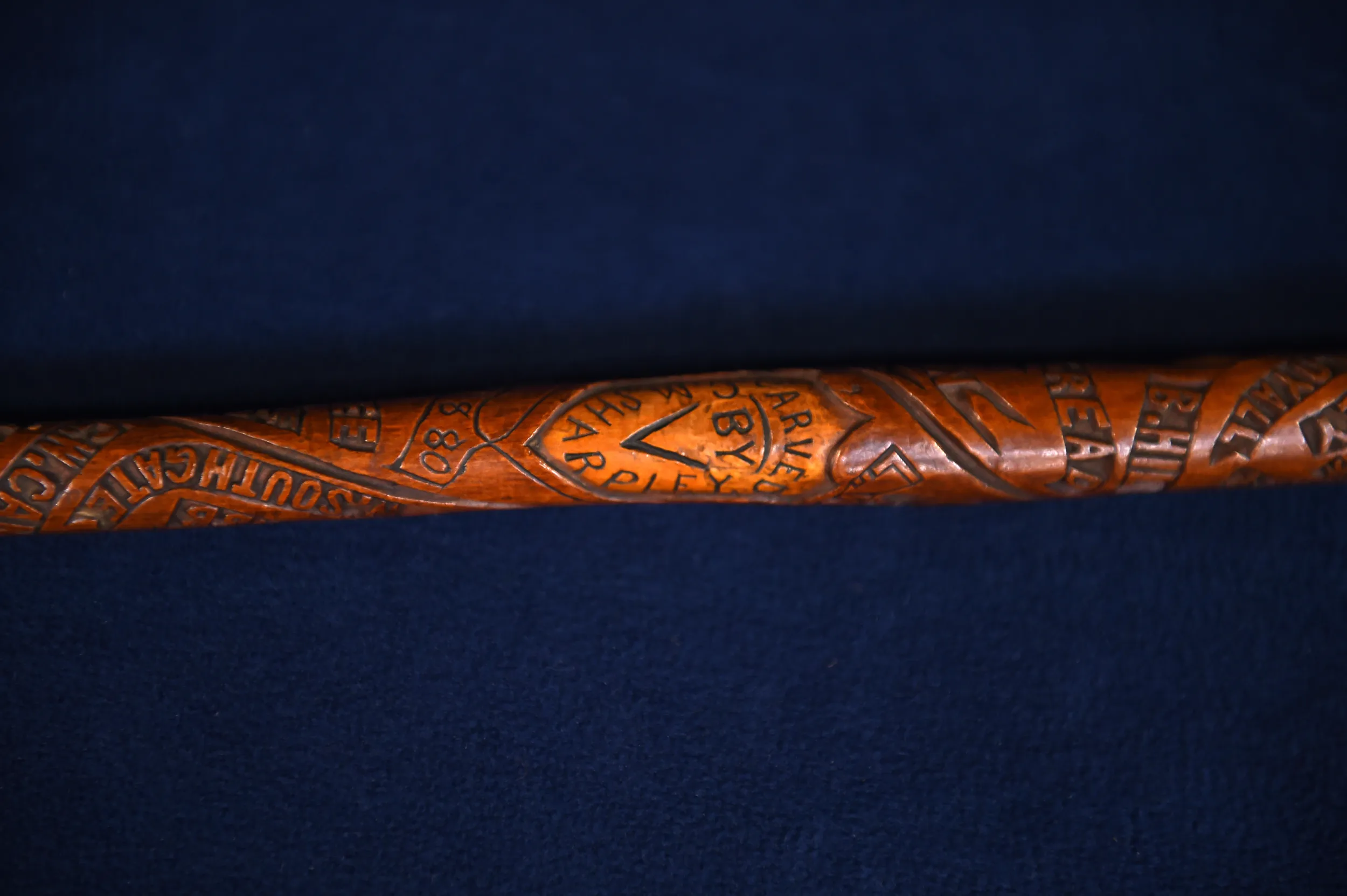GUEST: My great-grandfather was walking, and a house was being demolished. And he noticed a gentleman that was getting ready to break the handle off the cane, and he offered to buy it from him. So it's been in our family for about 80 years. My grandmother gifted it to me about a year and a half, two years ago. So I just brought it to the ROADSHOW, and wanted to get some more info.
APPRAISER: And so you know a little bit about the person who this cane was given to, because it's inscribed here on the handle. It was given to Colonel William Lamb...
GUEST: Right.
APPRAISER: ...mayor of the City of Norfolk, by the police department in
1881. What do you know about Lamb?
GUEST: So my understanding is he was a Civil War colonel. I know his son, I believe, was also Mayor of Norfolk later-- that's about it.
APPRAISER: Well, let's start with the cane, and then we'll get into Lamb. It's a great carved cane. It starts at the top with George Washington, and then spiraling around the total length of the cane are names, including here the name "carved by C.M. Sharpley in 1880."
GUEST: Yeah.
APPRAISER: And the cane handle itself is inscribed as a gift by the police to Lamb. This was given to him shortly after he took office. The thing about Lamb that's interesting is that he's really best known not necessarily because he was the mayor of Norfolk, but he was a colonel in the Confederate Army. Now, in 1861, he was a captain in the Sixth Virginia. When the Virginia troops shifted south, he was promoted to a colonel in the 36th North Carolina.
GUEST: Okay.
APPRAISER: And he was made commander of a coastal fort called Fort Fisher. And he held onto this fort in spite of repeated Union attacks until 1865, when the fort was overrun, and he was severely wounded. And after the war, he came back. Now, the interesting thing about Lamb was that not his son was mayor, but his father and grandfather had been mayor. And what I love about this is that we start at the top with all the mayors' names carved around the cane with tobacco leaves, which are fabulous, sort of a symbol of Norfolk. But if you look at the stick-- and I'm going to have to turn it this way-- at the very bottom is William Lamb's name. And I don't know if you looked before, but there are two other Lambs that are carved in this area. So his father's name and his grandfather's name is carved there. The handle is rolled gold, so it's really brass with a thin gold plate. It's not gold. And one little tip that I can show you, this is called the ferrule, F-E-R-R-U-L-E. And if you're a cane collector, you know that the longer the ferrule, the earlier the cane. So this is a relatively short ferrule.
Now, why do I say that? The early streets were not paved with macadam, which is crushed limestone. They were just... it was mud. And so you had to have a long ferrule to protect your cane. So by the time this cane was made, the streets were at least paved with macadam.
It's a great cane. It crosscuts three categories-- folk art, local politics, and the Civil War. If this cane came up for auction, I wouldn't be surprised if it sold for between $3,000 and $4,000.
GUEST: Really?
APPRAISER: Yeah.
GUEST: That's fantastic.
APPRAISER: For insurance purposes, I would insure it, maybe, for $4,000 or $5,000.
GUEST: Okay, got you.













